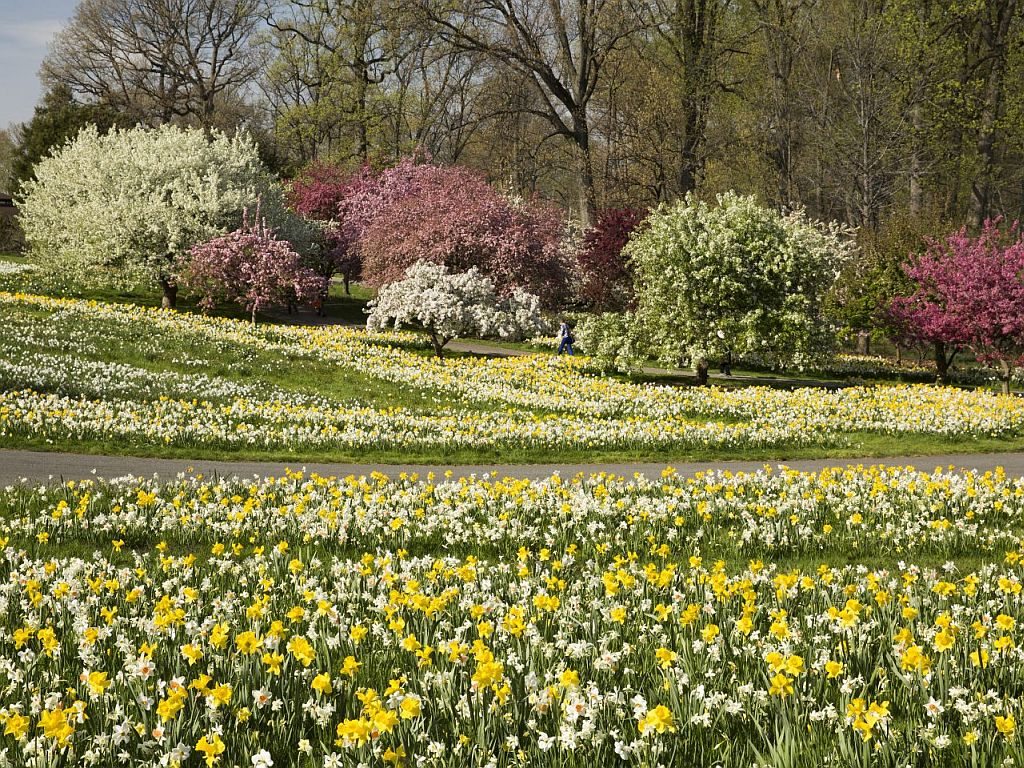Courtesy New York Botanical Garden
No matter where you live in America, winter is over. Daffodils are joyous yellow, and Japanese cherry trees a riot of white, pink and red shades. These are the visual stimulation for opening bottles of fragrant wines as light and delicate as a spring flower petal.
No wine says springtime as quick as rose’. The 2016 Martin Ray Vineyards & Winery Russian River Valley Rose’ of Pinot Noir is delightful. After macerating the grape skins and juice for seven hours, winemakers Bill Batchelor and Lindsey Haugton bled the juice for this rose’ into separate stainless-steel tanks and began fermentation (most of the juice continues to macerate for weeks, becoming Martin Ray’s pinot noir).
Its orange tint, and tangerine and cherry aromas herald the very tasty, upfront, ripe, orange and cherry California fruit flavors with a refreshing acidity. My glass of the 2016 Martin Ray Rose’ of Pinot Noir was the liquification of spring. 90 points. Retail is approximately $15.
American wine consumers love sparkling rose’: We drink more rose’ Champagne than any other country. But for casual parties and everyday sipping, the South African 2014 Simonsig Kaapse Vonkel Brut Rose’ will tingle your palate without tithing your purse.
Simonsig winery’s roots date to 1688 when the French Malan family arrived in South Africa and began planting vineyards. In 1953, Frans Malan established vineyards in the foothills of the Simonsberg Mountain. Simonsig, which means “Simon’s View,” is named for the spectacular vista from the mountain.
My view of the 2014 Simonsig Kaapse Vonkel Brut Rose’ began with pearl-like bubbles rising in the blend of pinot noir, pinot meunier (the two red grapes of Champagne) and South Africa’s unique red grape, pinotage. It is made in the Method Cap Classique–with a second fermentation occurring in the bottle— as in Champagne and the other traditional sparkling wine regions. With its six grams of sugar, the Simonsig sparkler, however, is on the lower level of Champagne’s brut scale.
An orange zest color, and just-picked cherry and strawberry aromas and flavors engage with a crisp, citrus acidity, making this sparkling wine ideal for the welcomed warm days ahead. 89 points. Retail is an un-Champagne like $24.
Rose’ and the south of France are inseparable ideas. The Cotes du Rhone appellation is the second largest in France after Bordeaux. It includes the vineyards of Chateauneuf-du-Pape where Chateau Mont-Redon lies.
In 1344, Mont-Redon was a papal-land holder and its vineyard was known as Mourredon. Henri Plantin purchased the property in 1923. Today it’s owned by the fourth-generation Yann Abeille and Pierre Fabre, who developed a vineyard in Roquemaure, two miles from Chateauneuf-du-Pape and part of the Cotes du Rhone appellation.
There, they cultivate grenache and syrah for the 2016 Reserve Mont-Redon Cotes du Rhone Rose’. A few hours of skin contact creates the light salmon color, and the 70 percent grenache brings its soft texture, and raspberry and strawberry flavors to syrah’s bigger body and black fruit flavor. The sum of the parts is an eye-appealing, fruit-filled, medium body rose’ ideal with a tuna nicoise salad. 88 points. Retail is approximately $15.
The lithe white flowers of the jasmine vine emit an intoxicating fragrance for me. Sometimes I find it in white wines like the California 2016 Justin Central Coast Sauvignon Blanc.
Justin was one of the early wineries in the Paso Robles area when investment banker Justin Baldwin and his wife Deborah purchased the land in 1981(the appellation was created two years later).
Justin winery became identified with its high-quality Bordeaux-blend Isosceles, but its sauvignon blanc was always well-made. In 2010, FIJI Water bought Justin, but the founders and winemaking team continue to run the winery.
The 2016 Justin sauvignon blanc has an enchanting citrus, jasmine and guava aroma. It’s layered with rich, lemon and white peach fruit flavors, finishing on a mild mineral backbone. It will be a welcome friend to any shrimp presentation or tangy cheese. 89 points. Retail is from $14 to $18.
Now before I tell you about this new wine in our market, I want to assure you I did not have a brain freeze during last month’s blizzard. It is 2016 Sula Vineyards Nashik Estate Sauvignon Blanc, Western Ghats India. Yes, India.
Founded by Stanford graduate Rajeev Samant in 1996, Sula Vineyards is nearly 2,000 feet above sea level in a cool microclimate of this tropical country. Its consulting winemaker is Californian Kerry Damskey, who trained full-time winemaker Ajoy Shaw, a master’s degree holder in molecular biology.
Pungent lemon and floral aromas trumpet the 2016 Sula Vineyards sauvignon blanc’s arrival. As through it were an Indian Sari, the wine’s medium body is wrapped with brightness: lemon-y and grapefruit flavors bearing a crisp, refreshing acidity drawn from the vineyards’ gravelly and volcanic soils. Secondary flavors of tropical fruits ranging from pineapple to guava slide to a long, pleasing finish. 88 points. Retail is a good-value $14. And, the conversation from your guests about this wine will be priceless.
So, now’s the time to slow down and smell the flowers. The ones in the garden, and the aromas in your glass.
Wine Photos: John Foy













Leave A Comment